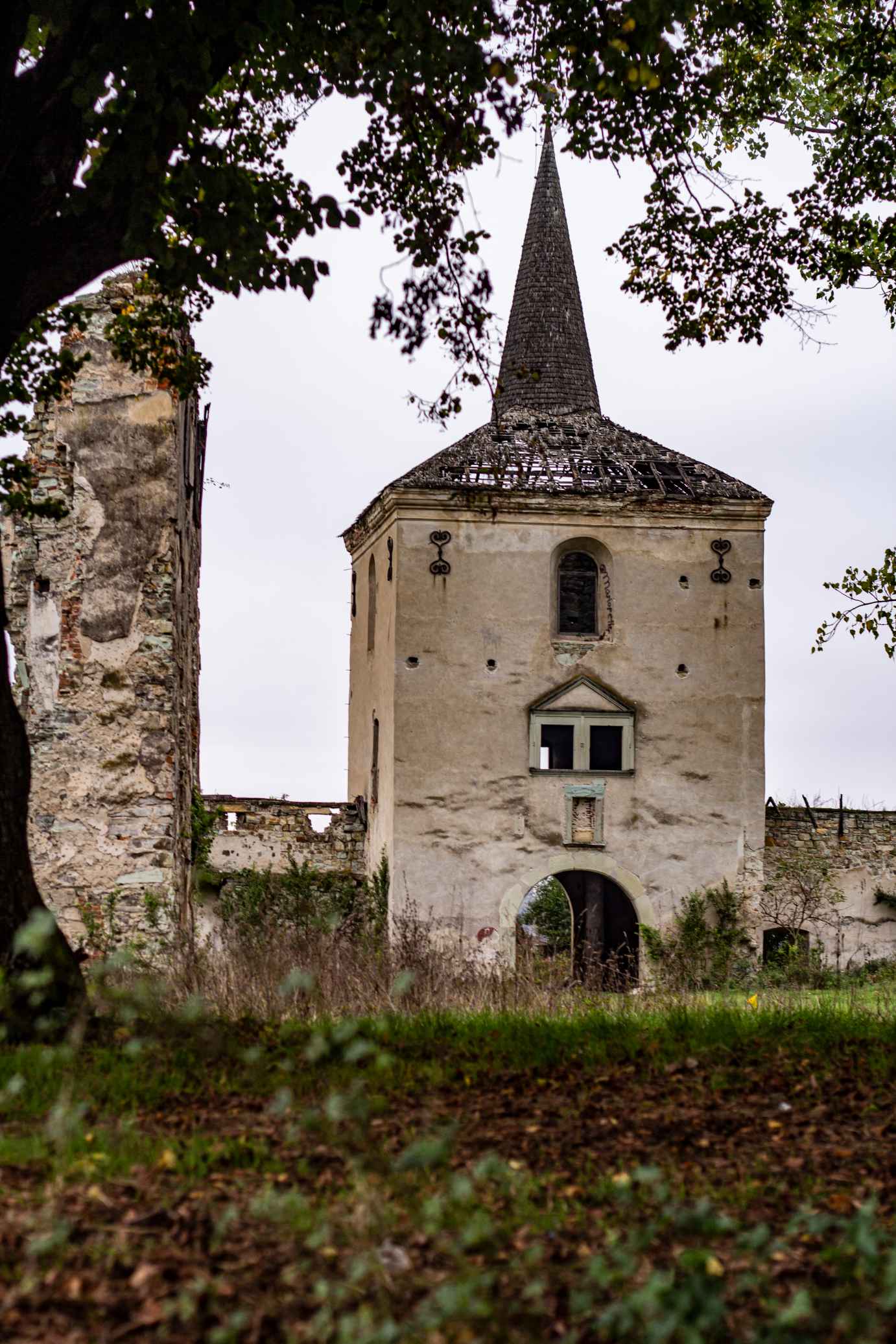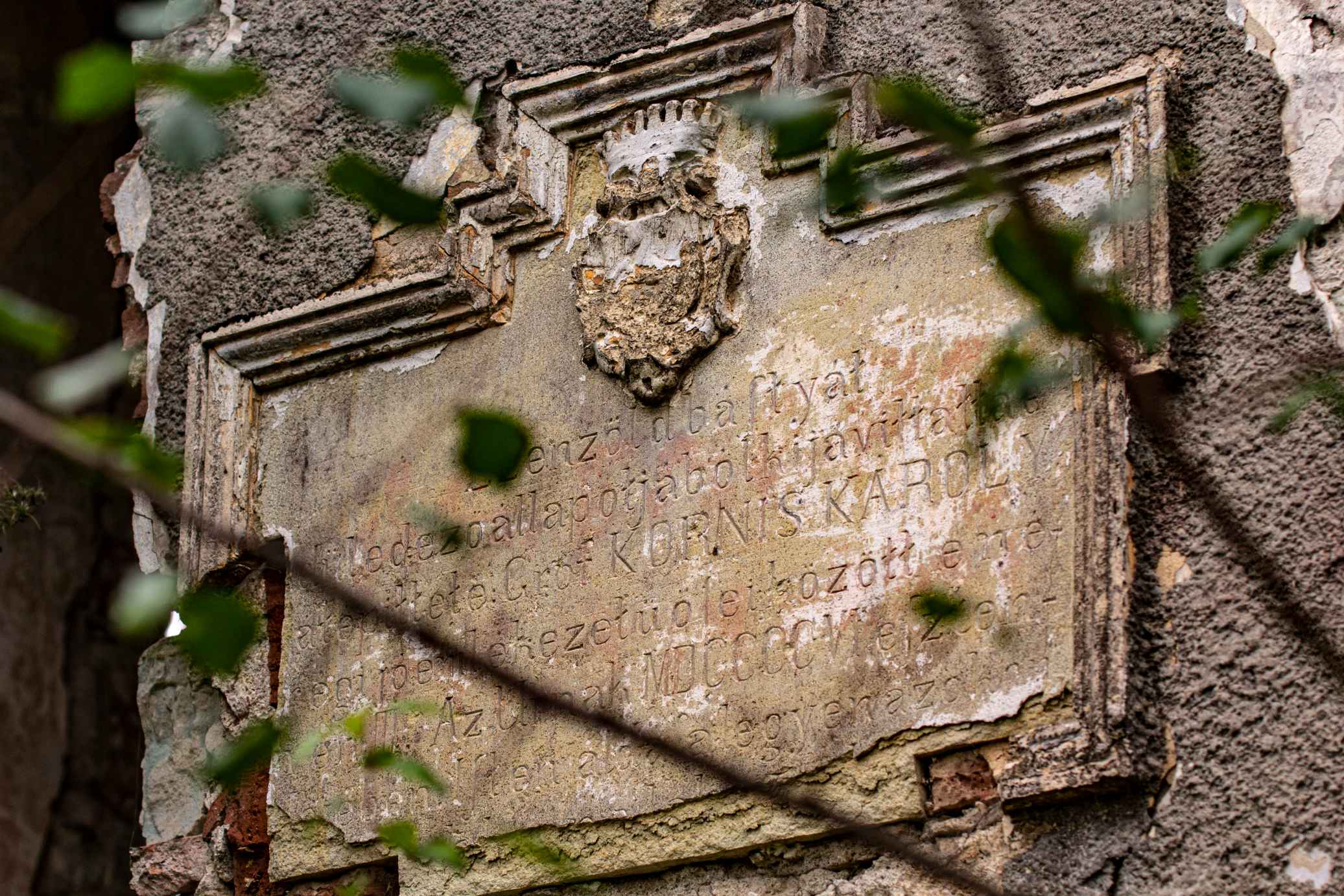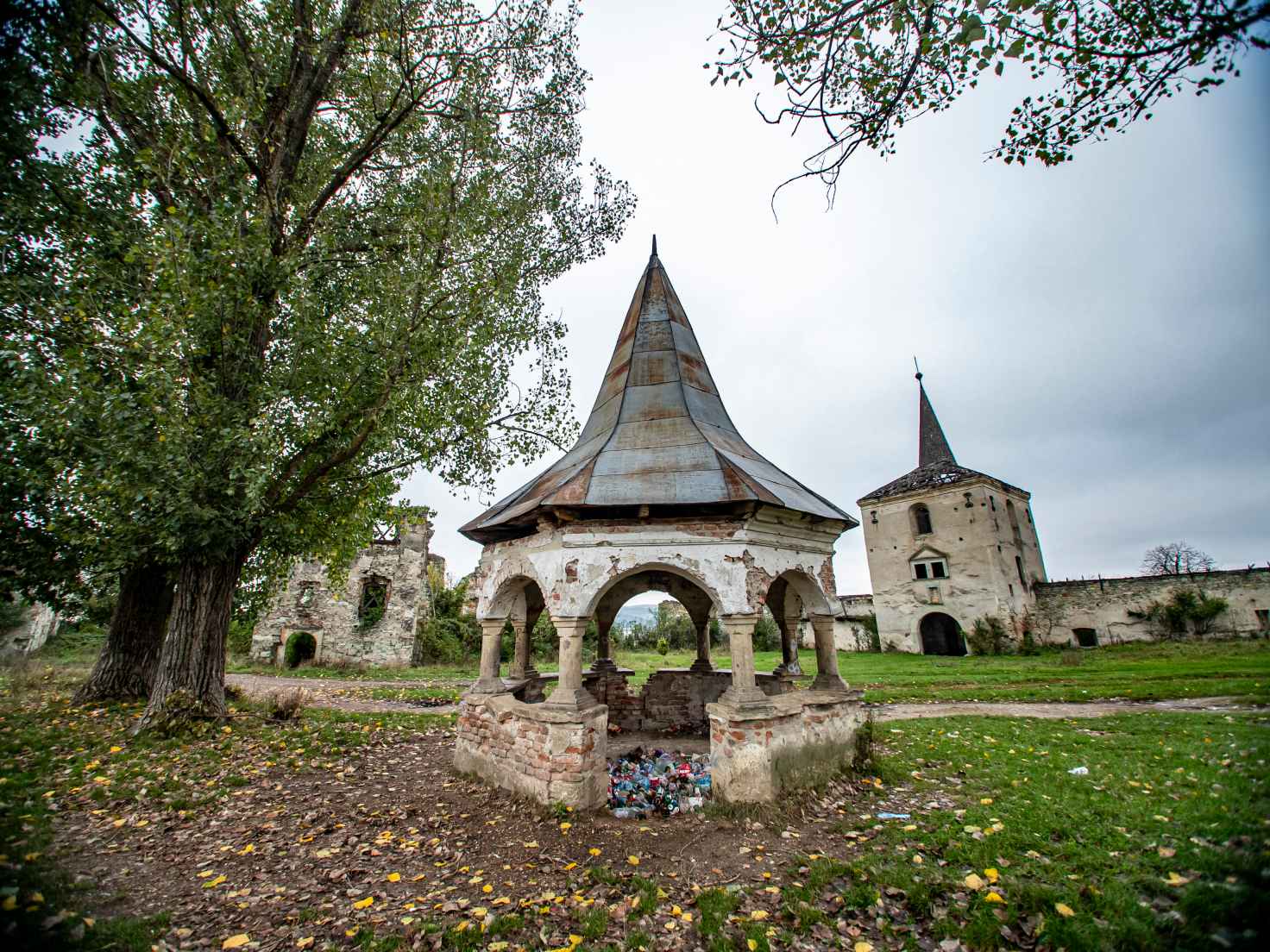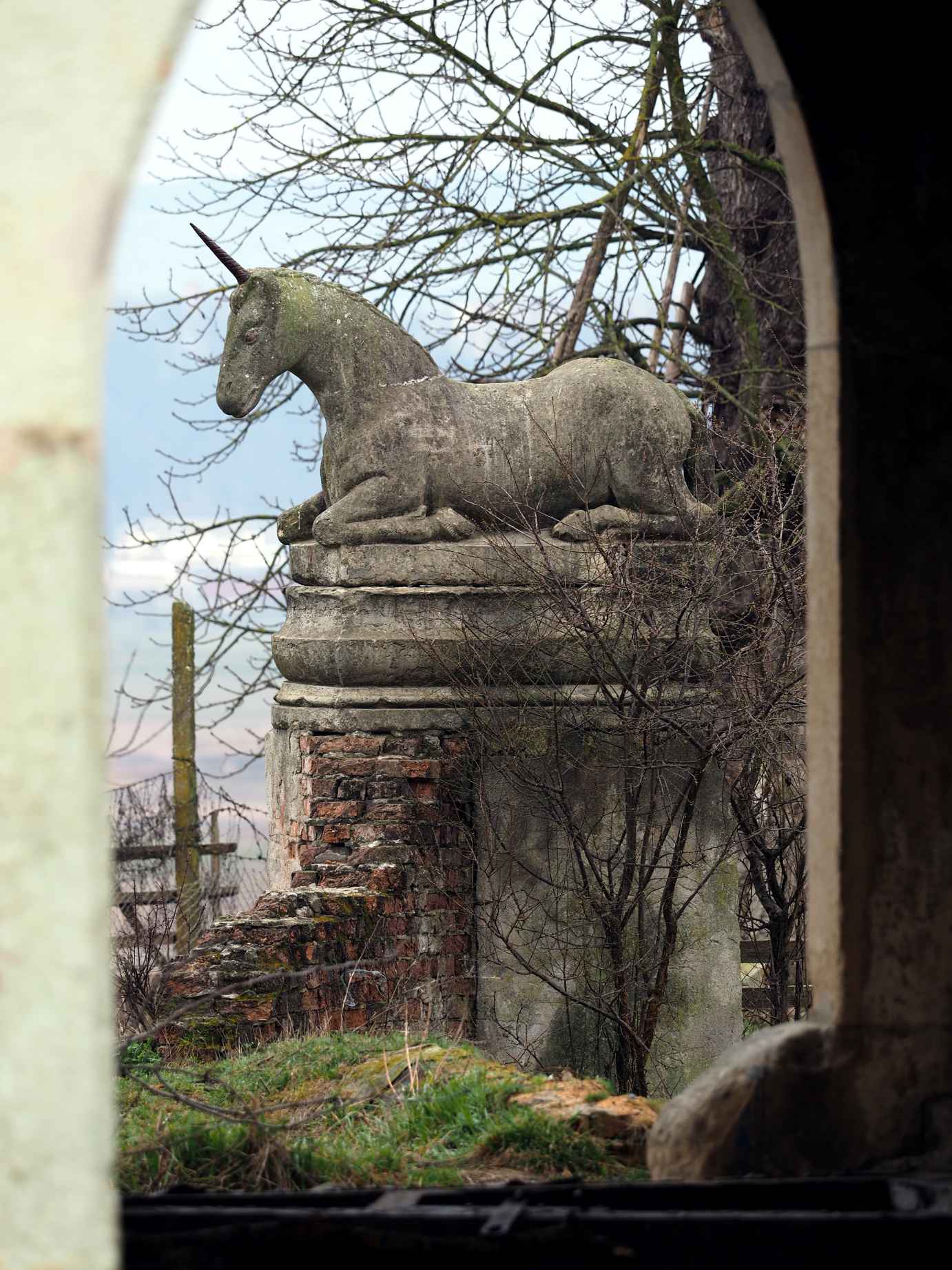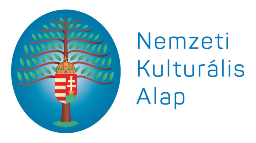The Kornis Castle in Mănăstirea
Historic Monument Code: CJ-II-a-A-07704
In the Middle Ages, the village of Mănăstirea (documented for the first time in 1308) was either owned by royal officials or nobles (including the Bánffy family), or was a royal domain as part of the estate of Unguraș Castle (found nearby). In 1602, through the marriage between Balthazar Kornis of Göncruszka and the daughter of the previous owner, the captain of Chioar Castle, Christopher Keresztúri, the village came into the possession of the Kornis family, who established their residence here.
The castle’s beginnings are connected to Christopher Keresztúri, who in the second half of the 16th century (the initials CK and the date 1593 were once visible above the entrance) started the construction of a smaller building with a rectangular ground plan, the so-called old castle, which formed the nucleus of the late Renaissance ensemble built in the 17th century. The residence was modified and extended by Baron Caspar and Count Sigismund Kornis, later governor of Transylvania. The representative rooms on the upper floors (some covered with coffered ceilings) could be reached via a Renaissance staircase made in 1673 by Albert Molnár, while the façades displayed various two-light window frames, as well as frames decorated in bas-relief.
The enclosure surrounding the residence, strengthened by three polygonal corner towers, a pentagonal bastion, and a massive gatehouse, was probably completed in the 1680s, but after the anti-Habsburg uprising led by Francis Rákóczi II it needed repairs, as evidenced by the inscription CO[mes] SI[gismund] KO[rnis] GUB[erantor] and the year 1720 on the gatehouse. At the turn of the 19th and 20th centuries, the ensemble was in need of repairs (in 1886 the gatehouse – Count Viktor Kornis; in 1906 the so-called Green Bastion – Count Károly Kornis).
After its nationalisation, the castle was taken over by the Ministry of Agriculture through the Ciceu Agricultural District, being transformed into a silo and a school. The library with over 9000 rare volumes was partly looted and partly burned in the courtyard. The vast collection of weaponry, ethnology, and natural history (stuffed animals, insects, plant and mineral collections) of the last Count who lived in Mănăstirea (a scholar and passionate about science and history) was also pillaged by the locals, who appropriated stuffed animals or ceramics, fabrics, and furniture. The building was also looted – joinery works, frames, and carved pieces were dismantled from the façades.
Around 1975, the Historic Monuments’ Directorate launched the castle’s restoration project, starting with the gatehouse, which at the time was in the worst state of preservation. The work involved a series of reinforcements and repairs at the frames, the cornice, and the roof. However, with the 1977 abolishment of the Directorate, similarly to other ongoing restoration works, the one at Mănăstirea was also interrupted, and the repair works on the other building parts were not continued. These gradually fell into disrepair in the following decades.
The church that belonged to the castle was taken over by the Orthodox Church.
The castle was returned to the Kornis family in 2006, but it is in an advanced state of ruin. In 2018, the Kornis family founded the Kornis Castle Association, in partnership with the Kallós Zoltán Foundation in Răscruci, as well as the Téka Foundation and the Kemény Zsigmond Theoretical High School in Gherla, with the mission to restore the castle and to use it for community purposes. The castle can be visited, but entry into the interior is not advised.
Extra:
- The castle was also known for two reliefs – icons carved in stone: one on the inner façade of the gatehouse; the other above the entrance of the so-called old castle. These are connected to two icons painted on wood, one preserved as part of the iconostasis in the church of Nicula Monastery, the other as the central image of the high altar in the former Jesuit Church in Cluj. Historical sources tell us that the original icon was painted in 1681 by a certain Luke from Iclod, and was donated to the church in Nicula. The interest of Count Sigismund Kornis was sparked when the news of a miracle reached him: the icon was reported to have wept. Thus, in 1699 he transported it to his chapel in Mănăstirea, but was later forced to return it to Nicula. An investigation of the Catholic Church followed, after which the public cult of the image was approved, but it was also decided that the icon be taken to Cluj, where in 1724 it was moved to the recently built church of the Jesuit Monastery. The cult of the icon spread throughout the country, being copied in wood, glass, and stone, but it also resulted in a dispute that has not been concluded to this day: which is the original icon – the one in Nicula or the one in the former Jesuit Church?
- Until recently, the gatehouse was guarded by two unicorns carved in stone – a reference to the name of the family: Kornis (unicornis), as well as to the family coat of arms, which represents this mythical creature. The coat of arms is still visible on the gatehouse’s stone frame, but the unicorns have disappeared. One night in 2016, during an attempted theft of the statues, one of these was removed from its pedestal and ended up in the castle’s former moat. Due to this incident, the current owner of the castle has moved the statues to a safer location.
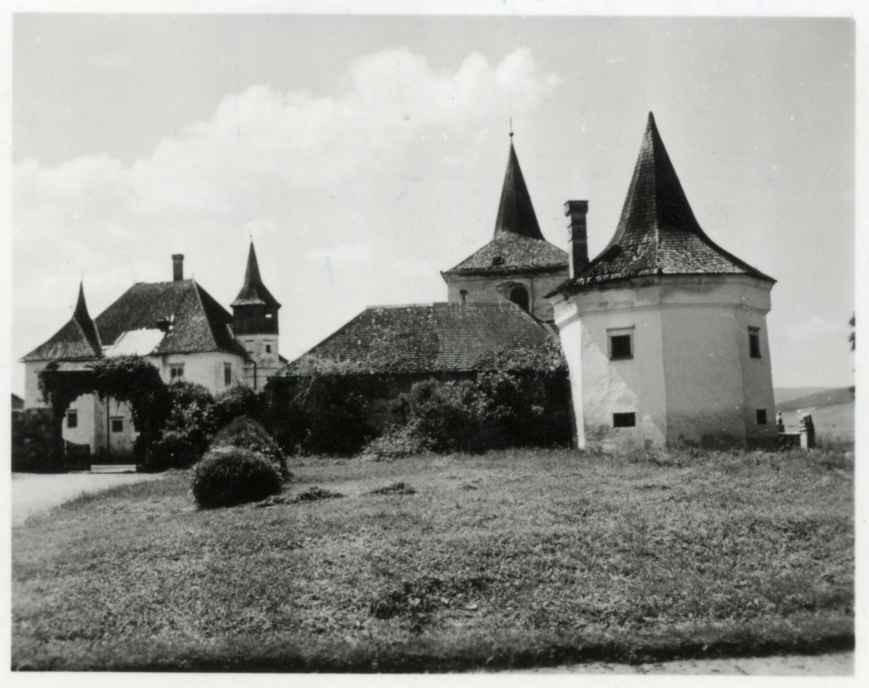
Hungarian National Museum, Central Database and Digital Archive of Images

